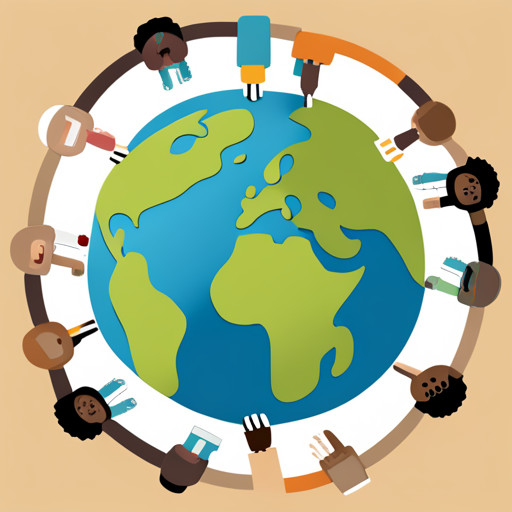Unseen Perils of Polluted Water: Are You at Risk?
This article explores the unseen dangers associated with water pollution, investigating its potential impacts on human health.

It elucidates prevalent contaminants in tap water and their dramatic effects.
Furthermore, it discusses preventive measures and highlights global efforts to combat this critical issue.
The objective is to provide an extensive understanding of the risks posed by polluted water, fostering awareness about its implications for public health.
Key Takeaways
- Polluted water sources, such as industrial waste, agricultural runoff, and household sewage, contain contaminants including heavy metals, organic compounds, pathogens, and microplastics.
- Chemical contaminants in tap water, such as heavy metals and organic compounds, can lead to health issues including developmental problems, nervous system harm, kidney damage, and certain types of cancer.
- Water pollution can result in the proliferation of waterborne diseases, including cholera, dysentery, typhoid fever, and polio, primarily caused by bacteria, viruses, and parasites.
- Preventive measures to reduce the risk of water pollution include rigorous water treatment procedures, strict regulations on waste disposal, public education about safe water practices, and the use of filtering techniques and household practices.
Understanding the Scope of Water Pollution

Assessing the magnitude of water pollution necessitates a detailed exploration of its various sources, impacts on human health and ecosystems, as well as potential mitigation strategies. Pollution Sources span a wide range, from industrial waste to agricultural runoff and household sewage. These pollutants can contain harmful substances such as heavy metals, organic compounds, pathogens and microplastics which pose risks to both humans and wildlife.
Studies indicate that ingestion or exposure to polluted water can lead to an array of health issues including gastrointestinal diseases, neurological disorders and cancers. Ecosystems too suffer from the impact of water pollution with disrupted food chains leading to declines in species diversity and overall ecosystem functionality.
Mitigation strategies commonly involve Water Purification methods aimed at removing these contaminants before the water is deemed safe for use. Techniques such as sedimentation, filtration and disinfection are typically employed in this process. However, it is critical to note that while these processes effectively remove many types of pollutants; certain substances like pharmaceuticals residues or specific heavy metals may not be completely eliminated.
In order to ensure comprehensive protection against the perils of polluted water, further research is needed to develop more advanced purification technologies capable of dealing with all types of contaminants. Additionally, policies must be implemented that regulate pollutant emissions at their source thus reducing the burden on purification systems.
The Hidden Dangers Lurking in Your Tap

The hidden dangers lurking in tap water present a significant public health concern, with potential harmful effects ranging from minor ailments to life-threatening conditions. Various studies have indicated the presence of different chemical contaminants in tap water worldwide, including heavy metals like lead and mercury, organic compounds such as pesticides and industrial waste products. These chemicals pose serious threats to human health through prolonged exposure or consumption.
Research has shown that these chemical contaminants can cause various health issues like developmental problems in children, harm to the nervous system, kidney damage, and even certain types of cancer. The Environmental Protection Agency (EPA) has set guidelines for permissible levels of these contaminants; however, violations occur frequently due to inadequate infrastructure or lack of resources for necessary checks.
Addressing this problem calls for effective filtration solutions tailored towards specific pollutants prevalent in particular regions. Activated carbon filters are commonly used to remove organic compounds while ion-exchange resins are effective against heavy metals. Reverse osmosis systems offer comprehensive filtration but tend to be more expensive and require regular maintenance.
Public awareness about the need for regular testing of tap water quality is also crucial. This will ensure early detection and prompt action against contaminant spikes before they become widespread health threats.
Impact of Polluted Water on Human Health

Impact on human health from contaminated water sources is a pressing issue, with potential repercussions ranging from minor illnesses to severe, life-threatening conditions. Disease proliferation becomes inevitable when populations are exposed to pollutants through contaminant ingestion. This detrimental phenomenon affects individuals across nations and socio-economic contexts, underscoring the global nature of this significant health concern.
Detailed research affirms that polluted water has long-term consequences on human health. Contaminants in water include heavy metals, organic matter, microorganisms, and other harmful substances that contribute to disease progression over time. The most commonly reported diseases associated with contaminated water consumption include cholera, dysentery, typhoid fever and polio.
Microbial contamination remains one of the leading causes of waterborne diseases globally. Pathogens such as bacteria (e.g., E.coli), viruses (e.g., Hepatitis A), and parasites (e.g., Giardia) strive in untreated or poorly treated water systems. These microbial agents can cause acute diarrhoeal diseases which account for approximately 2 million deaths each year according to World Health Organization estimates.
Simultaneously, chronic exposure to chemical contaminants like arsenic or lead through contaminated drinking-water may result in long-term health problems such as cancer and neurological disorders. Moreover, continued consumption of such polluted waters heightens the risk of developmental issues in children.
Collectively these findings highlight the gravity of disease proliferation due to contaminant ingestion from polluted water sources; an area necessitating urgent attention for intervention strategies aimed at reducing related morbidity and mortality rates worldwide.
Preventive Measures to Reduce Risk

Preventive measures to reduce exposure to waterborne diseases include:
- Implementing rigorous water treatment procedures
- Enforcing strict regulations on industrial waste disposal
- Promoting public education about safe water practices
These strategies aim at minimizing the risk of disease spread through contaminated water sources.
The application of filtering techniques has been recognized as a valuable tool in treating polluted water. Various methods such as:
- Chemical disinfection
- Sedimentation
- Filtration
- Ultraviolet irradiation
are employed to eliminate harmful pathogens from the water supply. These techniques not only ensure the removal of physical impurities but also neutralize dangerous microorganisms that pose health risks.
In addition to centralized efforts for clean water provision, household practices play a crucial role in preventing the adverse effects associated with contaminated water use. Simple procedures like boiling or using portable filters can significantly reduce pathogen load in drinking water. Household rainwater collection systems, when appropriately maintained, can provide an alternative source of clean and safe drinking water.
Regulations on industrial waste disposal need stringent enforcement to control pollution at its source. Industries should be mandated to treat their effluents before discharging them into natural bodies of water, thus ensuring reduced contamination levels downstream.
Lastly, public education is instrumental in promoting safe behaviors regarding personal hygiene and sanitation among community members. The dissemination of accurate information about potential risks associated with unclean water consumption enables individuals to adopt safer practices, reducing their vulnerability.
The Global Effort Against Water Pollution

Addressing the issue of water pollution necessitates a concerted global effort, which includes involvement from international organizations, governments, and local communities alike. This unified approach is key to introducing effective measures that tackle the multifaceted challenges posed by water pollution.
Pollution legislation plays an integral role in this endeavor by providing a legal framework for controlling and reducing harmful substances emitted into bodies of water. Such legislation often encompasses regulations on industrial effluents, guidelines for wastewater treatment, and penalties for non-compliance. These laws not only regulate polluting activities but also encourage advancements in clean technologies.
International cooperation is another significant component in combating water pollution. The shared nature of many water resources necessitates transboundary collaboration for their protection and management. Organizations like the United Nations Environment Programme (UNEP) facilitate such cooperation through treaties such as the Convention on the Protection and Use of Transboundary Watercourses and International Lakes (Water Convention).
Local communities also contribute substantially to these efforts. Grassroot movements can foster a culture of responsibility towards local water bodies while advocating for stronger enforcement of existing regulations. Community-driven initiatives, when coupled with top-down approaches from governmental agencies and international organizations, have proven to be highly effective in mitigating impacts of pollution.
Frequently Asked Questions
What Are Some of the Common Misconceptions About Water Pollution?
Common misconceptions about water pollution, or 'pollution myths', often include the belief that contamination is easily visible and that all polluted water appears dirty, neglecting the threat of invisible chemical contaminants.
How Does Polluted Water Affect the Economy?
Polluted water presents economic impediments through decreased productivity due to illness, increased healthcare costs and infrastructure expenditure. Furthermore, it may lead to tourism decline as the aesthetic appeal of natural water bodies is compromised.
Are There Any Legal Penalties for Individuals or Companies Causing Water Pollution?
Legal repercussions are indeed enforced for individuals or companies causing water pollution. This is referred to as Pollution Accountability, wherein stringent regulations and penalties ensure responsibility for damage caused to the aquatic environment.
How Do Water Filtration Systems in Homes and Businesses Work to Combat Polluted Water?
Water filtration systems in homes and businesses function by removing impurities from water through physical barriers, chemical processes, or biological actions, maximizing filtration efficiency and requiring regular system maintenance for optimal performance.
Can Polluted Water Have Any Impact on Air Quality or Contribute to Climate Change?
Polluted water, emanating from various pollution sources, can indeed affect air quality and contribute to climate change. The evaporation process transfers pollutants into the atmosphere with potential health implications for humans and ecosystems.
Conclusion
In conclusion, water pollution presents a formidable global challenge, posing grave risks to human health. The hidden dangers in tap water necessitate concerted efforts towards preventive measures and increased public awareness.
It is crucial that global initiatives intensify actions against water pollution to safeguard public health and ensure sustainable access to clean, safe drinking water for all. Further research is indispensable in refining strategies to combat this pressing issue effectively.

This post has been generated by AI and was not reviewed by editors. This is Not legal advice. Please consult with an attorney.




